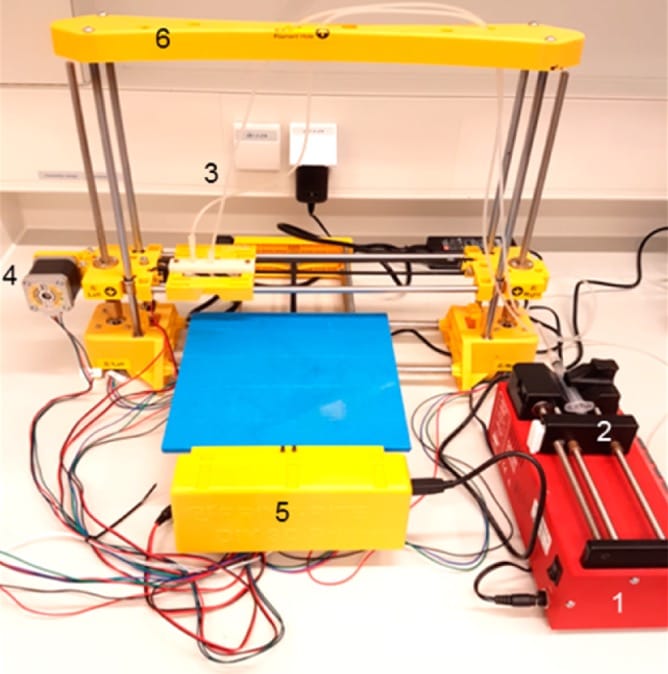
I’m looking through a scientific paper where researchers used metabolic activity to “print” a new material.
The paper, entitled, “A Straightforward Approach for 3D Bacterial Printing” proposes a way to print in a new material through biologic means.
Essentially, they’ve created a bio-ink that is composed of a standard gel and a specific set of bacteria. These bacteria were selected as they have the ability to transform one material into another.
Then, they adapted a standard filament-based 3D printer into a syringe-based system and 3D printed the bio-ink. The trick was they printed the bio-ink onto a material that the bacteria read with. This material was delivered by a second syringe extruder.

Their process seems to involve printing alternating layers of each material, so that the bacteria always have a suitable medium to feast upon.
In this way they were able to print patterns of new material on a surface in layers. It seems they encountered the usual issues of speed, flow and gap that plague desktop 3D printer operators, but were in the end able to tune their system to produce simple objects up to 14 layers deep.
This is certainly an entirely new process to print 3D objects, joining the lengthy list of methods currently available. This process, however, is likely to be applicable only to smaller objects for the foreseeable future, as the gel-like nature of the print means you could not print larger items: they would collapse under their own weight!
Via ACS

